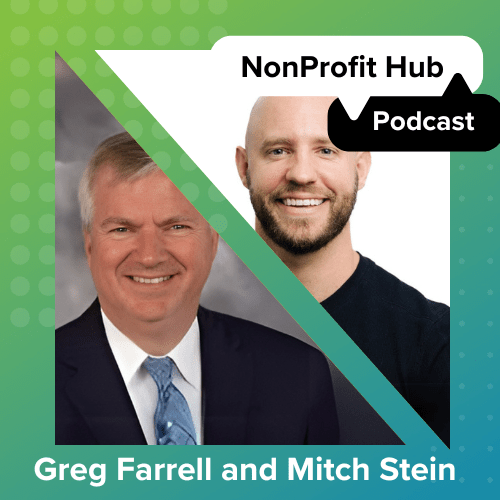We’re seeing significant changes in the world. The COVID-19 pandemic has impacted aspects of society that we never expected. Individuals are working from home, others have applied for unemployment, and organizations everywhere have closed their doors.
Nonprofits are not exempt from the unprecedented impact of this global pandemic. Rather, some are actually feeling the radical societal changes more than anyone else as they operate on the frontlines combatting the virus.
Because of these radical shifts, we’re also seeing different trends emerging in the nonprofit world than previously anticipated for the year 2020.
Keeping up with new trends is vital for the health and wellbeing of nonprofit organizations everywhere. So, as you read through this guide on the latest developments in the nonprofit sector, think about how your organization can and should respond. Here are some of the trends to look out for:
- The switch to virtual fundraising and events.
- Operating your nonprofit in a shifting economy.
- Incorporating new engagement strategies.
- The consolidation of nonprofit technology.
1. Switching to Virtual Fundraising
Due to social distancing guidelines, people are spending more time than ever in their homes. Without the opportunity to gather as a community, how can your organization make sure your donors are staying engaged with your mission? By moving your mission online!
Launching virtual fundraising campaigns is an effective strategy to keep your community engaged. However, this only works if your organization is able to host such campaigns effectively. We recommend the following strategies to incorporate virtual elements to your next fundraising campaign:
- Focus more heavily on donation impact. Provide immediate insight into the impact that your supporters have toward your mission by giving to your campaign. For example, if you put together a wish list and accept in-kind donations through this method rather than expecting monetary gifts, donors know exactly what good their gift is doing for the organization.
- Inform donors about additional tax incentives. There are additional tax deductions available for individuals giving to philanthropic causes right now. There are above-the-line deductions available so that anyone taking the standard deduction can receive an additional deduction on top of it. Tell your donors about it as another incentive to give.
- Make sure you have the best software. Effective virtual fundraising software allows you to brand your donation pages to your organization with your colors, logo, and fonts. It should also be easy for your supporters to submit their donations. This means the submission process should be streamlined with minimal forms and questions.
Nonprofits have been moving toward virtual-style fundraising campaigns even before the pandemic. This means that the technology you need to handle these types of campaigns is already fully developed and ready to use.
You’re not limited by a single platform either! You can schedule multiple types of virtual fundraising campaigns throughout the coming months to engage your audience in a variety of ways. For example, you might schedule a peer-to-peer fundraising campaign, plan your own dedicated day of giving for people to give to your online donation page, or host a virtual fundraising event to raise money while stewarding your supporters.
2. Operating in a Shifting Economy
The COVID-19 pandemic has caused more than just a shift in our day-to-day work and social lives. It has also caused a drastic downturn in the economy. More and more people are filing for unemployment benefits while many businesses have had to shut their doors.
Because of this, it’s becoming increasingly difficult for supporters to contribute to fundraising campaigns. As a nonprofit, this means your primary source of revenue is depleting.
But there is something you can do about it! There are resources available to help nonprofits deal with the ever-impending recession, including:
- Funding from the Paycheck Protection Program and the Economic Injury Disaster Loans through the CARES Act. According to Jitasa’s CARES Act Guide for Nonprofits, each of these provides funding for operational expenses at nonprofits and small businesses. This means organizations with fewer than 500 employees can apply to receive loans from the government to help cover operational expenses like rent, utilities and employee salaries.
- Expanded matching gift programs from top companies. Many large companies recognize the challenges occurring in the world and the increased need for philanthropic action. That’s why they’ve expanded their matching gift programs so that employees who choose to give during these difficult times can make an even greater impact.
If you’re worried about raising enough money to get your organization through these difficult times, consider reaching out to a fundraising consultant. Many top consulting firms are offering free access to services, toolkits and other helpful resources to help nonprofits navigate the shifting economy. You can also recruit their help for your organization to develop a fundraising strategy that will work for you.
3. Finding New Engagement Strategies
Many nonprofits, when faced with difficult times, make the mistake of halting or slowing down the frequency of communications they have with supporters. Keeping up with communication and engagement during these difficult times is what helps support future donor retention for your organization.
Future donor retention will ensure successful recovery after the COVID-19 pandemic ends. Therefore, consider brainstorming the types of engagement strategies that your organization can organize to keep your supporters involved.
Here are some examples of our favorite engagement strategies:
- Call your donors. Call to check in with your supporters. The first thing you should do is ask them how they’re doing. This shows that you’re putting their needs first. Then, discuss what your organization is doing to adhere to social distancing guidelines or to help ease the impact of coronavirus on the community and how the supporter can get involved.
- Launch an advocacy campaign. Use your online advocacy toolbox to create online petitions, click-to-call campaigns, and Tweet-a-rep campaigns. These are great opportunities to help your supporters make a difference toward your mission without having to reach into their wallets. For example, you might launch a petition to encourage your congressman to sign off on a bill that will provide additional support to nonprofits during the COVID-19 crisis.
- Host virtual community-building events. Host events to bring your supporters together as a community for some fun. Use the resources available to you to plan these events. For instance, if you have a talented chef on your team, you might host a virtual cooking demonstration. Or, if a staff member plays an instrument, host a virtual concert for everyone!
- Provide educational opportunities. Provide educational resources on your nonprofit’s website so that your supporters can learn about various aspects of your mission. Education is one of the four pillars of the donor experience. Therefore, providing educational resources not only entertains your donors but also makes them feel more connected to your cause.
Truly engaging your supporters in a way that’s meaningful for them shows that your relationship extends beyond their wallets. Donors don’t want to feel like ATMs. Show them you care by getting creative with free engagement strategies.
4. Consolidating Technology
You’ve probably realized how difficult it is to keep up with your different technological resources, especially while your team members are working from a distance. For instance, if a team member has a question about the functionality of one solution, they can’t just walk across the office to ask the best person.
Another problem that many are running into is that there is a connection issue between two of the software solutions. If this occurs, it can be difficult to figure out who should deal with the problem, which can halt all of your operations for a period of time if everyone needs access to the solutions.
For this reason, it’s become more and more apparent how valuable complete nonprofit software solutions are for virtual operations.
Consolidated technology helps prevent issues like:
- Unsynchronized updates. When one solution is not updated but their integration partner is, there lies a potential issue with connectivity being broken. Plus, it could prevent a security risk regarding donor data.
- Data transfer issues. Different software solutions read data in different ways. Therefore, when you transfer data between them, some of this important information could be lost in translation.
A single platform with more functionality or a single provider with multiple solutions helps consolidate your technology for seamless connections. For example, if your CRM is accompanied by a fundraising software solution, you can rest assured that the data collected from your donation pages will be streamlined into donor profiles without a hitch.
We recommend starting with your CRM solution and building technology out from there. If you’re considering consolidating technology and want to look for a new donor database, this CRM guide from SalsaLabs should help walk you through the decision and purchasing process.
Everyone thought they knew what 2020 would bring in terms of nonprofit trends. However, no one could have guessed the extent of the impact that the COVID-19 pandemic had on the times and on nonprofit strategies. By adjusting your nonprofit’s plan accordingly, you’ll get through the pandemic and come out on the other side of it stronger than ever before.






